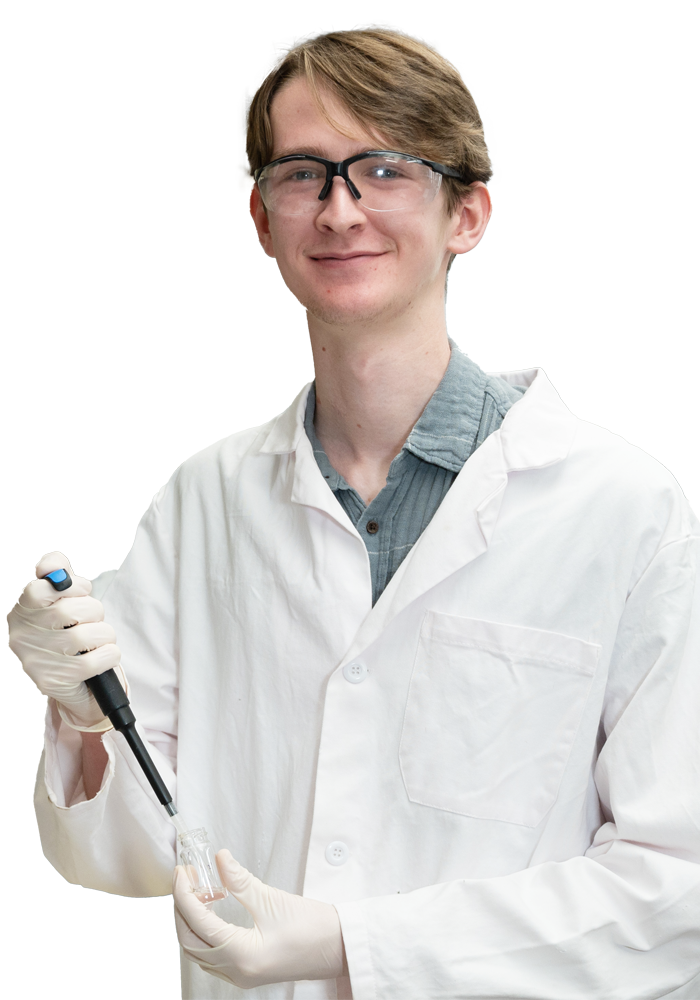Student Stories
Marcus Schafer looks to clean up antibiotics in wastewater
“Marcus has exceptional chemical and problem-solving insight,” said Terrence Collins, the Teresa Heinz Professor in Green Chemistry and the Director of the Institute for Green Science. “He forms his own judgments on the chemistry he is studying. They are so solid that one wouldn’t want to shake him from his conclusions unless in possession of powerful contradicting data.”
Schafer became interested in chemistry while growing up in Baton Rouge, Louisiana. Between his hometown and New Orleans is an area known as Cancer Alley, where more than 150 oil production facilities along the Mississippi River release chemicals into the air. Local populations have higher rates of cancer than national averages.
“Louisiana is a very good example of why chemistry done without sustainability in mind can be massively harmful to humans and the environment,” Schafer said.
In the spring of his first year, Schafer joined the Institute for Green Science on a project led by Ph.D. candidate Parameswar Pal, an in-depth analysis on how a specific type of catalyst, TAML, with a common oxidizing agent, hydrogen peroxide, could be better used to purify water. They discovered the reaction rate fluctuates depending on the target they want to destroy and the acidity found in the contaminated water.
Using a Summer Undergraduate Research Fellowship, which provides undergraduates with $3,500 to conduct summer research, Schafer has pursued his own research interests into fluoroquinolone contamination. A common antibiotic, fluoroquinolone is use widely and appears in waterways globally.
When antibiotics are left in wastewater streams, they are at concentrations high enough to inhibit bacteria but not kill them. These conditions make some sewers breeding grounds for antibiotic-resistant bacteria, which have the potential to jumpstart the next pandemic.
Schafer found the same catalyst he has investigated in his research with Pal and Collins, TAML, can significantly reduce fluoroquinolones in a water source.
“Our current generation catalyst was able to very nearly destroy antibiotics in about two hours of treatment using the bare minimum amount of peroxide,” Schafer said. “I’m very excited about how powerful we can make this technology.”
Schafer said the next steps for this research are to use the catalyst against real wastewater samples so he can further enhance and refine the processes needed to remove antibiotic contaminants.
“Another thing that excites me is the interdisciplinary potential that this research and sustainability chemistry really have,” Schafer said. “We as chemists can do a lot, but this scale of environmental contamination can’t be dealt with from just one field. We have to work very broadly to make sure we’re not doing things that will make our problems worse.”
Schafer recently received a Barry Goldwater Scholarship for his dedication to research.
■ Kirsten Heuring

